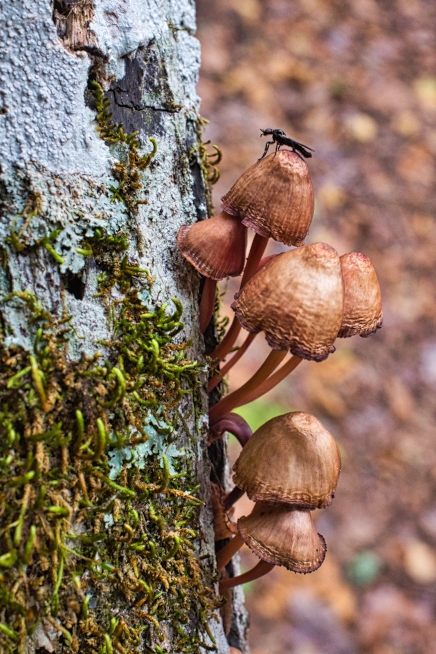During a recent hike in the Ouachita National Forest in Arkansas, I noticed an intriguing cluster of fungi growing on a tree trunk. Tree fungi are remarkable organisms, thriving by feeding on trees through the release of fungal spores. Depending on the species, fungi can either harm their hosts, coexist harmlessly, or even benefit the trees by aiding in nutrient cycling and improving soil health.

An Unexpected Guest
What made this particular find even more interesting was the presence of an unidentified insect perched on one of the fungi caps. The combination of fungi and insect interaction added an unexpected layer of intrigue to my wildlife photography. It’s moments like these that remind me how interconnected all life in the forest truly is.
The Role of Fungi in the Forest Ecosystem
The Ouachita National Forest is home to an impressive variety of fungi species. While some fungi negatively affect trees by causing decay or disease, many are beneficial. They play a crucial role in nutrient recycling, breaking down dead organic matter to release nutrients back into the soil, which supports new growth and maintains the forest’s health.
Fungi also form partnerships with trees through mycorrhizal networks, where they exchange nutrients and improve tree resilience. These interactions demonstrate how fungi aren’t just decomposers but essential players in the forest’s ecosystem.
Fungi and Their Interactions with Other Organisms
The insect I spotted alongside the fungi highlights another fascinating aspect of forest life—the interactions between species. Fungi serve as habitats and food sources for countless insects, contributing to the forest’s biodiversity. These relationships are still being studied, but they provide valuable insights into the interconnectedness of ecosystems.
Observing and Protecting the Forest
Taking the time to notice small details like fungi and their interactions with other organisms enhances your appreciation for nature’s complexity. As we study these organisms further, we gain a deeper understanding of their role in forest health and the larger ecosystem. Protecting these habitats ensures that forests like the Ouachita continue to thrive for generations to come.
